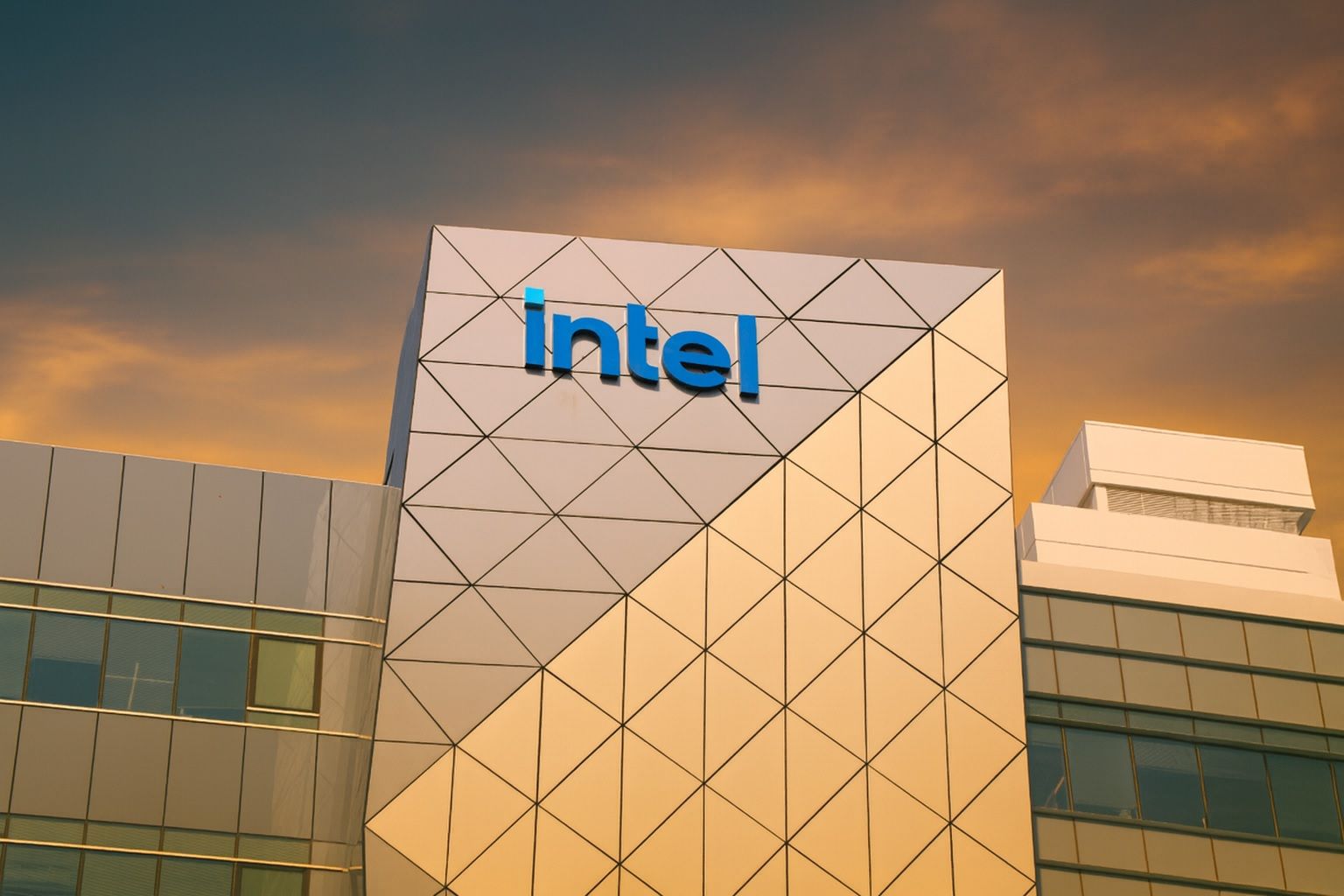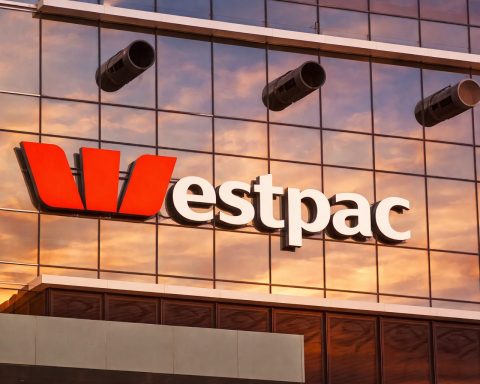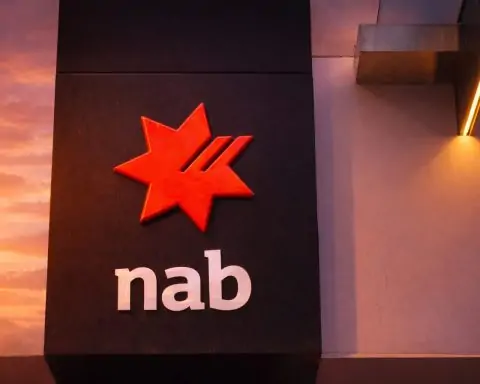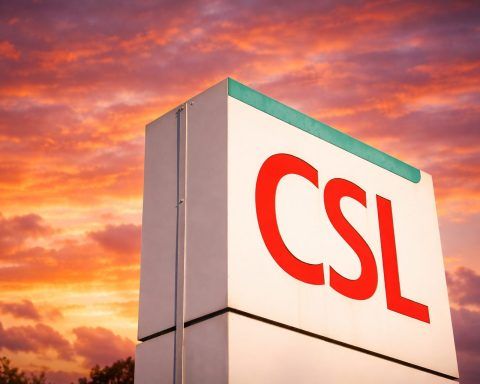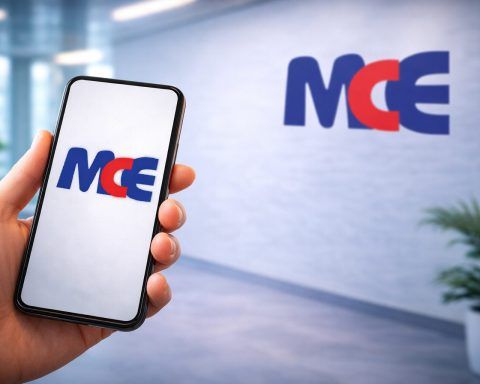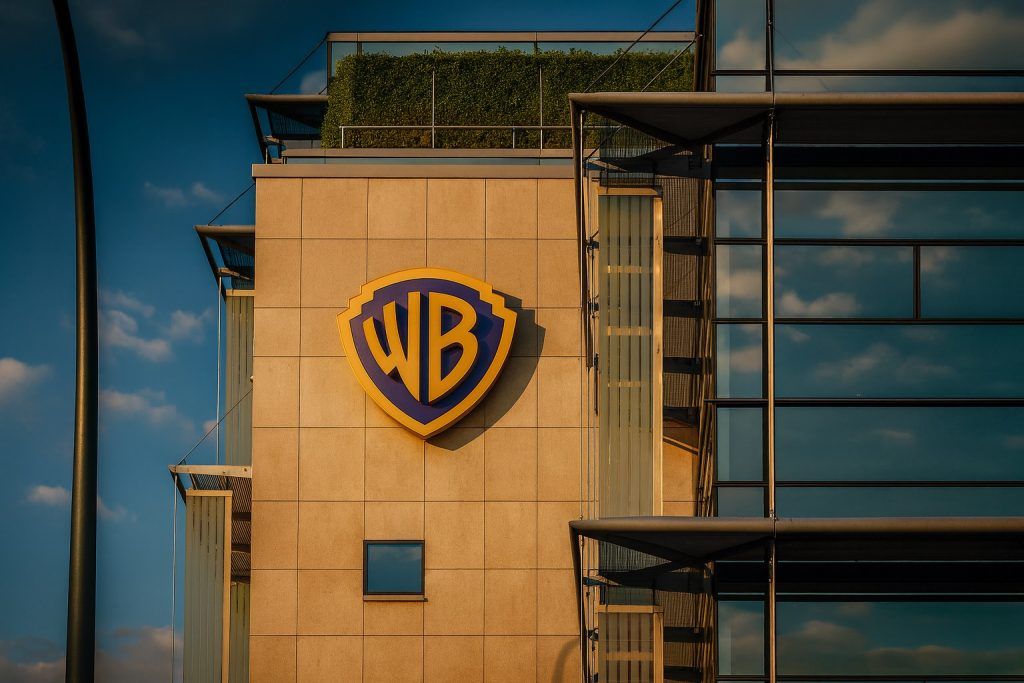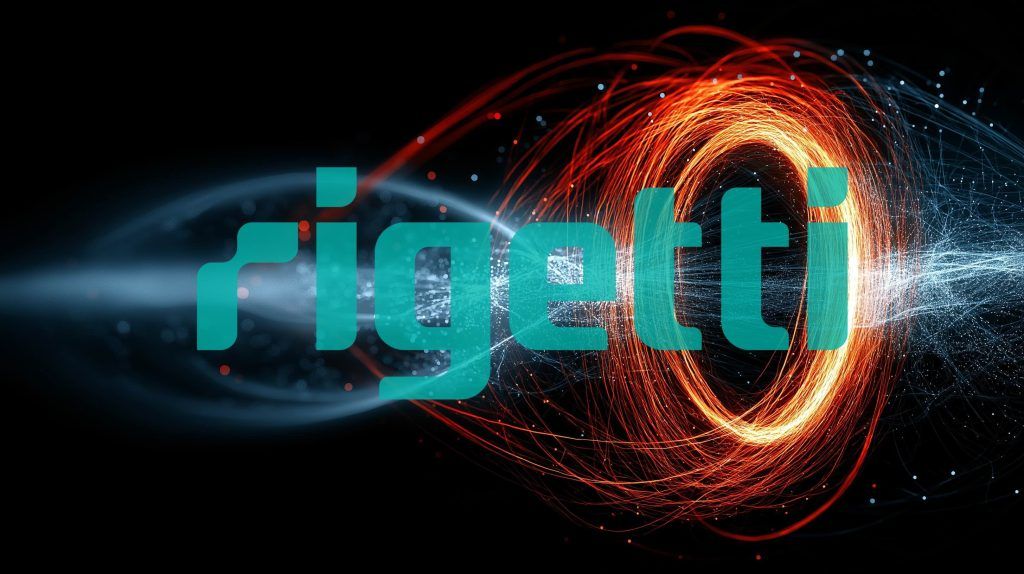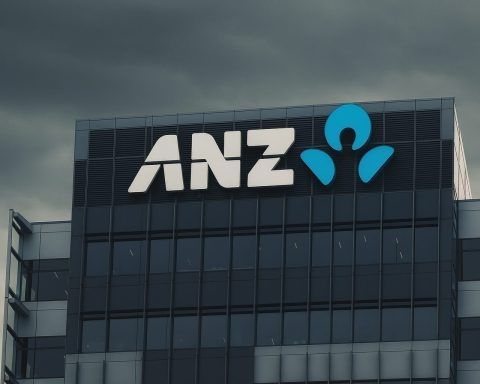- Intel near 2-year high: Intel Corporation (NASDAQ: INTC) stock traded around $37.8 on Oct. 21, 2025 – down slightly after jumping almost 3% the day prior [1] [2]. Shares recently hit an intraday peak of $39.65 (a 52-week high) amid a dramatic 2025 rally [3]. The stock has surged roughly 85% year-to-date, vastly outpacing the broader market [4].
- Big backers fuel optimism: Blockbuster developments have propelled Intel’s rise. In August, the U.S. government agreed to take a ~9.9% equity stake (~$10 billion via CHIPS Act funding) to bolster domestic chipmaking [5]. Last month Nvidia invested $5 billion for a ~4% stake [6], and Japan’s SoftBank poured in $2 billion. Rumors of new partnerships – a major foundry deal (speculated with Microsoft Azure) this week, talk of AMD using Intel’s fabs, and even whispers of Apple as a strategic investor – have further boosted sentiment [7].
- Turnaround vs. losses: Despite the hype, Intel’s fundamentals remain shaky. Q2 2025 revenue was $12.9 billion (flat year-on-year) and the company is still losing money [8]. New CEO Lip-Bu Tan – an industry veteran who took the helm in March – has slashed ~20% of Intel’s workforce and paused non-critical projects to cut costs [9]. Intel suffered an $18.8 billion loss in 2024 (its first annual loss since 1986) amid heavy investment in manufacturing [10], and analysts don’t expect a return to profitability until at least 2026 [11].
- Analysts cautious: Wall Street is divided on Intel’s comeback. The stock’s huge run-up has many analysts advising caution – the average 12-month price target sits in the mid-$20s, well below the current price [12]. Bank of America recently downgraded INTC to “Underperform,” warning shares had climbed “too far, too fast” without fundamental improvement [13]. While most brokerages rate Intel a Hold or worse, a few bulls have raised their targets into the $40s after the Nvidia deal [14], arguing strategic alliances could rejuvenate growth.
- AI arms race: Intel’s rally comes as rivals thrive in the AI boom. Advanced Micro Devices (AMD) just hit an all-time high near $240 after scoring major AI chip deals (including multibillion-dollar partnerships with OpenAI and Oracle that sent AMD stock up over 30% in a day) [15]. AMD is up ~80% in 2025, and some bulls now predict it could reach $300 [16]. Meanwhile, Nvidia remains the dominant AI player – controlling ~90% of the data-center AI processor market and recently topping a $1 trillion market cap [17]. By comparison, Intel’s market value is around $175 billion – roughly half of AMD’s and just a fraction of Nvidia’s [18] – underscoring how far Intel lags its peers.
- Technical signals: Chart-wise, Intel has flashed bullish momentum but faces resistance. The stock formed a “golden cross” in October as its 50-day moving average rose above the 200-day – a positive trend indicator [19]. Prices bounced off support in the mid-$30s last week (around $34–$36) [20], and technicians see additional support at ~$33 (early October lows) [21]. Overhead, the recent ~$40 peak is a key resistance level [22]. Momentum indicators are approaching overbought territory (the 14-day RSI neared 70) [23], suggesting the rally could be due for a breather, even as high trading volumes on up-days signal strong investor interest [24].
Intel Stock Near Multi-Year High After 2025 Rally
Intel’s stock price is back in the spotlight after an extraordinary run in 2025. As of Tuesday afternoon (Oct. 21), INTC traded around $37.8, holding near its highest levels in about two years [25]. The share price is essentially flat to slightly lower on the day, pausing after a nearly 3% surge on Monday to $38.10 [26]. That recent strength put Intel just a few dollars shy of its 52-week high – the stock briefly touched $39.65 last week [27] – and marks a dramatic rebound from the sub-$20 lows seen early this year. Intel has now roughly doubled off its January lows, climbing about 85% year-to-date [28], far outperforming the broader market.
This remarkable rally reflects growing optimism that the beleaguered semiconductor giant might finally be turning a corner. Investor enthusiasm has been fueled by a flurry of headline-grabbing deals, government support, and AI hype – even as Intel’s financial results have yet to catch up with the stock’s momentum. The question now is whether this comeback can hold, or if the chipmaker’s fundamentals will ultimately bring the stock back down to earth.
Blockbuster Deals and AI Hype Fuel Intel’s Surge
Illustration: U.S. flag and Intel logo, symbolizing the White House’s 10% stake in Intel (Reuters/Dado Ruvic)
Intel’s resurgence has been driven in large part by unprecedented backing from both Washington and industry peers. In late August, the White House stunned markets by announcing plans to purchase a ~10% stake in Intel – converting unused CHIPS Act grants into equity as a lifeline for the struggling company [29]. Under the deal, the U.S. government will pay about $8.9 billion for a 9.9% holding (at $20.47 per share) [30], providing a massive capital infusion aimed at boosting Intel’s domestic chip fabrication capacity. It’s an extraordinary intervention in corporate America: “He walked in wanting to keep his job and he ended up giving us $10 billion,” President Trump quipped, referring to Intel’s CEO and the favorable terms for the government [31]. (Intel noted the stake is passive with no board seat, though it comes with a warrant for an extra 5% if Intel’s foundry business falters [32].) News of the federal support – effectively creating a government-backed “national champion” to rival Asian foundries – sent Intel shares up over 5% on the announcement [33].
Just weeks later came another shock: Nvidia, the world’s leading AI chip firm, agreed to invest $5 billion in Intel for a stake of roughly 4% [34]. The September 18 deal – part of a broader strategic partnership – was a game-changer for market sentiment. Nvidia’s backing not only provided cash; it also came with a plan for the two companies to jointly develop next-generation PC and data-center chips combining Intel CPUs with Nvidia AI accelerators [35] [36]. Importantly, Nvidia will not simply use Intel as a contract manufacturer for its GPUs (it still relies on TSMC for that) – but Intel will supply certain processors and advanced packaging for joint products while Nvidia evaluates Intel’s foundry tech [37]. Investors cheered this alliance between erstwhile rivals: Intel’s stock exploded 22% higher in one day on the news – its biggest single-day gain since 1987 [38]. Analysts at the time called it “a massive game-changer… resetting [Intel’s] position in AI”, as one eMarketer analyst put it [39]. The Nvidia partnership instantly lent Intel credibility in the AI arena where it has lagged, and hinted at potential business that could migrate from Taiwan’s TSMC to Intel over the long term [40].
These two blockbuster investments – a federal rescue stake and Nvidia’s vote of confidence – have been augmented by other big-name backers. Japan’s SoftBank quietly took a $2 billion stake in Intel in August as well [41], a move viewed as another signal of belief in Intel’s turnaround story. And in late September, rumors surfaced that Apple might also invest in or partner with Intel, perhaps to diversify Apple’s chip supply chain beyond TSMC. Although neither company confirmed talks, just the report of Intel approaching Apple drove Intel’s stock up ~6% on Sept. 25 [42] [43]. (Apple has long sourced chips from TSMC and previously used Intel modems, so the idea of a renewed collaboration sparked excitement about Intel’s foundry business potentially landing a marquee customer.)
On top of equity stakes, major AI partnership prospects have added fuel. This past week, reports emerged that Microsoft may enlist Intel’s foundry unit to produce chips for its Azure cloud servers – a deal rumored to involve AI accelerator chips for Microsoft and its partner OpenAI [44]. While unconfirmed, the news of a possible Azure contract nudged Intel’s stock higher in recent days [45], reflecting how eager investors are for any sign of Intel winning big orders. Earlier in October, speculation that AMD (Intel’s PC chip rival) might outsource some chip production to Intel’s foundries (rather than to TSMC) led to a 4% intraday pop in Intel’s shares [46]. And throughout the fall, virtually any mention of “AI” and “Intel” in the same sentence – from Intel’s own product announcements to venture fund rumors – has fed into the rally. “Investor enthusiasm is high amid chatter of big AI customers and partnerships,” TechStock² observed in its analysis of Intel’s surge [47] [48]. In short, the market is pricing in a potential Intel renaissance driven by AI and deep-pocketed allies.
Turnaround Efforts vs. Shaky Fundamentals
Lost in the euphoria, however, is the reality that Intel’s core business remains in turnaround mode. The company is only weeks away from reporting what will likely be its third consecutive quarterly loss. For Q3 2025 (to be reported Oct. 23), Intel itself guided to roughly $12.6–13.6 billion in revenue (a slight uptick sequentially) but a deeper net loss than Q2 [49]. In Q2, Intel generated $12.9 billion in sales – flat year-over-year – and still bled cash, as gross margins shrank below 30% [50]. In fact, 2024 was brutal: Intel lost nearly $19 billion for the year (its first annual red ink since 1986) [51], reflecting how dramatically its fortunes had fallen with the PC slump and years of manufacturing missteps. “The company ceded the AI market to Nvidia and has lost CPU share to AMD for several years,” Reuters noted, underscoring that a cash infusion alone won’t solve Intel’s challenges [52].
To his credit, CEO Lip-Bu Tan (appointed March 2025) is taking aggressive action. Tan – a longtime tech investor and former Walden International chief – was brought in to lead Intel’s turnaround and has moved swiftly to cut fat and refocus the strategy. In his first few months, Tan slashed about 20% of Intel’s workforce (targeting ~75,000 employees by year-end) and shelved various non-core projects [53]. He has also slowed the pace of Intel’s capital spending, vowing to “build factory capacity only when there is demand” rather than pouring money into speculative fabs [54]. Several units have been restructured or sold off – for example, Intel agreed to sell a majority stake in its Altera FPGA division to private equity, raising cash and streamlining operations [55]. These tough measures are aimed at stabilizing Intel’s finances after years of heavy investment and shrinking market share. “We picked up $10 billion,” Tan reportedly joked with U.S. officials about the government stake [56] – a nod to the fact that he effectively raised capital at favorable terms. Still, he freely acknowledges the turnaround will take time: Intel does not expect to return to profitability until 2026 at the earliest [57].
The disconnect between soaring stock price and weak fundamentals has some market veterans nervous. “Intel’s problems are beyond a cash infusion… [it] needs to catch up with TSMC technologically to attract business,” cautioned one portfolio manager, noting that even with government support, Intel’s manufacturing lags industry leaders [58]. Indeed, Intel’s much-touted next-gen process (called 18A, roughly equivalent to 2nm) has reportedly hit yield issues, raising doubts about its timeline [59]. Rival TSMC is already moving toward 2nm production by late 2025, years ahead of Intel’s schedule [60]. And while Intel just unveiled a new AI-oriented server chip code-named “Crescent Island” (due in 2026) and a forthcoming PC chip “Panther Lake” on 18A, skeptics wonder if the company can execute on these plans [61]. In short, Intel still has much to prove to justify the optimism embedded in its stock. The coming earnings report will be a key checkpoint for Tan’s turnaround efforts – any signs of progress (or lack thereof) could sway investor sentiment quickly.
Wall Street Split: Skepticism vs. Hope
Unsurprisingly, the breathtaking rally in Intel shares has divided analysts and investors. Many on Wall Street remain cautious, arguing that Intel’s stock has run well ahead of its fundamentals. The consensus 12-month price target for INTC is only around $26–$30, according to various surveys – implying 20–30% downside from the current mid-$ Thirty range [62]. Several firms have recently reiterated Hold or Sell-equivalent ratings. For instance, analysts at Bank of America double-downgraded Intel to “Underperform” (a sell), bluntly warning that the stock had climbed “too far, too fast” without tangible business improvements to back it up [63]. Deutsche Bank likewise stuck to a Hold and $30 target even after the Nvidia alliance, citing ongoing “execution risks” in Intel’s roadmap [64]. The prevailing concern: while deals and government money provide a lifeline, Intel still faces an uphill battle to reclaim technology leadership and profitability.
There are, however, notable bulls who see a once-in-a-generation opportunity. A few optimistic analysts have raised their targets into the low $40s following the recent developments [65], betting that Intel’s strategic partnerships (and a bit of Washington help) will jump-start a true recovery. Longtime market commentator Jim Cramer is among those encouraged – he has praised CEO Tan as a “legendary semiconductor investor” for orchestrating the big-government, Nvidia and SoftBank deals that “sparked a roughly 50% rally” in the stock [66]. In Cramer’s view, Intel finally has “adult supervision” and the necessary backing to stage a comeback in AI chips. Similarly, bulls argue that the national security angle – with the U.S. determined to have a viable domestic chip giant – means Intel will enjoy tailwinds (from government contracts to R&D support) that its rivals won’t [67]. They also note that Intel’s valuation, even after the surge, looks modest relative to peers: about 3 times sales and 20 times forward earnings, versus Nvidia’s ~25× sales and 50× earnings multiples [68] [69]. If Intel can execute better and even modestly close the gap in AI technology, the stock could have further to run, bulls say.
The tug-of-war between hype and reality is evident in recent trading. Short interest in Intel remains elevated as some skeptics position for a pullback, yet dip-buyers have swooped in on any weakness so far. When Intel’s shares pulled back ~10% in early October (after a rapid rise to ~$39), buyers stepped in around the mid-$30s, suggesting a base of investors are willing to bet on Tan’s turnaround story at those levels. The stock’s ability to sustain its high valuation into 2026 likely hinges on delivering concrete results – something both optimists and pessimists will be watching closely in the coming months.
Intel vs. Competitors: Chasing AMD and Nvidia in the AI Race
Intel’s resurgence is happening against the backdrop of an industry-wide scramble for AI dominance – one in which Intel still trails the pack. Its primary rivals have been on their own tear this year thanks to the ravenous demand for AI accelerators in data centers and generative AI applications.
Nvidia, of course, is the undisputed leader in AI chips. The company controls roughly 90% of the market for data-center AI processors (GPUs) and its market capitalization recently exceeded $1 trillion [70]. Nvidia’s stock has soared in 2023–2025 on explosive earnings growth from AI chip sales. At about 50× earnings, Nvidia’s valuation reflects expectations of continued high growth [71]. By aligning with Nvidia, Intel is effectively trying to ride on the coattails of the AI wave rather than compete head-on with Nvidia’s GPU dominance. The partnership could also pose a long-term challenge to TSMC, which currently manufactures Nvidia’s most advanced chips. Some analysts note that if Nvidia can eventually shift even a portion of production to Intel (for instance, using Intel’s advanced packaging or future processes), it would mark a significant shake-up in the industry [72]. Notably, the U.S. government’s stake in Intel underscores Washington’s strategic goal of building a domestic alternative to TSMC – reducing reliance on Asian supply chains for cutting-edge chips [73].
AMD, meanwhile, has been on a tremendous run as well, leveraging the AI boom to complement its gains in CPUs. AMD’s new MI300 accelerator chips have started gaining traction as a challenger to Nvidia. In mid-October, AMD announced landmark deals to supply AI chips to OpenAI and Oracle’s cloud – contracts that investors saw as validation of AMD’s AI strategy. AMD’s stock jumped over 30% in a single day on those announcements, ultimately propelling AMD to all-time highs near $240 per share [74]. The stock is now up roughly 80% year-to-date. Some Wall Street bulls think AMD’s momentum could carry it to $300 in the next year if AI chip adoption accelerates further [75]. With a market value now around $350 billion, AMD has surpassed Intel in size – a remarkable turn of events given Intel’s long-held dominance over PC processors. AMD’s CEO Lisa Su recently remarked that collaboration with partners like OpenAI is opening new avenues for growth, a subtle dig at Intel’s absence in many of these cutting-edge deployments.
From a market share standpoint, Intel remains on the defensive. In personal computing, Intel’s once-ironclad hold has eroded to AMD’s benefit (AMD now holds an unprecedented ~30% of the desktop CPU market). In data centers, Intel’s Xeon server chips are increasingly being challenged by both AMD’s Epyc CPUs and a wave of custom Arm-based chips at cloud providers. And in AI accelerators – the key growth area – Intel is a minor player, essentially starting from scratch with plans for 2025–2026 products. The company’s strategy is to leverage partnerships (like with Nvidia and possibly others) and to use its manufacturing prowess as a lure. Intel’s nascent foundry business has scored some smaller wins (producing chips for firms like MediaTek), but landing a top-tier customer remains critical. The rumored Azure deal, if it materializes, could be exactly that kind of catalyst – potentially validating Intel’s foundry technology for high-performance AI chips. Short of that, Intel will continue playing catch-up to the likes of TSMC and Samsung in the contract manufacturing arena [76].
The competitive landscape thus puts Intel in a race against time. The company must innovate quickly – and execute flawlessly – to prevent AI-era opportunities from slipping away to competitors. With government and industry partners now actively in its corner, Intel has a fighting chance, but it faces fierce headwinds from extremely well-positioned rivals.
Chart Check: Technical Indicators Flash Mixed Signals
Even as the fundamental debate rages, technical analysts are dissecting Intel’s price chart for clues to its next move. Recent trading patterns have been volatile but constructive. Notably, Intel’s stock formed a “golden cross” in October, a bullish indicator that occurs when the short-term moving average rises above the long-term trend. Specifically, Intel’s 50-day moving average (now around $36–37) crossed above its 200-day moving average (around $34) [77] for the first time in years, confirming the positive momentum of the past few months. This signal suggests an improving long-term trend, often interpreted as a sign that a sustained uptrend is underway.
The surge to ~$39.65 in early October was met with heavy selling, but the subsequent pullback established a support base in the mid-$30s. Chartists point to a potential “tweezer bottom” pattern formed around the lows of Oct. 13–15, when Intel twice bounced near $35.6 [78]. In candlestick terms, this dual low suggests that buyers stepped in at that level, creating a short-term floor. Indeed, key support levels are now identified at roughly $35–$36 (recent closing lows) and around $33–$34 (the area of the early October breakout) [79]. As long as the stock remains above the low-$30s, bulls retain the upper hand from a technical perspective.
On the upside, resistance is clearly defined by the recent peak just shy of $40. The $40 mark is both a psychological hurdle and effectively the 52-week high (the Oct. 10 intraday high was $39.65) [80]. Analysts note that Intel failed to hold above $39 on that spike – a sign of either profit-taking or a lack of conviction at higher prices. A clean breakout above $40 on strong volume would be a bullish signal of another leg higher; absent that, the stock could continue seesawing below this ceiling in the near term.
Momentum oscillators show Intel nearing overbought levels. The Relative Strength Index (RSI) for the stock hit the high-60s in mid-October [81], just below the typical overbought threshold of 70. This doesn’t guarantee a reversal, but it does indicate the rally has been steep. Other indicators like the stochastic (KDJ) likewise show the stock at stretched levels short-term [82] [83]. Additionally, technicians observed that trading volume has expanded during rallies – for example, over 99 million shares traded on Oct. 15 when the stock rebounded, well above average [84]. Elevated volume on up days is a positive sign, as it validates buying interest, but the presence of some high-volume down days in October also reflects tug-of-war volatility in the name [85]. Overall, the technical setup for Intel appears constructive but not without risks: the new uptrend is intact above support, yet a period of consolidation would be natural after such a rapid ascent.
Looking Ahead: Earnings Test and Analyst Forecasts
The next major catalyst on the calendar is Intel’s third-quarter earnings report, due Thursday, Oct. 23 after market close [86]. This report will offer investors a crucial glimpse into whether the company’s recent cost-cutting and partnership wins are translating into any improvement in financial performance. Intel’s management has guided for only a modest sequential revenue uptick in Q3, and a continued net loss [87] – so expectations are relatively muted. Wall Street will be closely watching Intel’s gross margin trend (after it fell to GrossMargin% in Q2) and any commentary on demand in its PC and data-center segments. Given the stock’s big run, investors have little room for disappointment: any hint that the turnaround is stumbling or that outlook for Q4 is weaker than hoped could trigger a pullback. On the flip side, positive surprises – such as better-than-expected PC sales, improving profit margins, or confirmation of a new foundry customer – could validate some of the optimism fueling the stock.
Beyond this week’s earnings, the longer-term trajectory for Intel will depend on execution and whether the company can capitalize on the opportunities in front of it. Bulls argue that with nearly $20 billion in fresh capital (from the U.S., Nvidia, SoftBank, etc.), Intel now has the breathing room and resources to invest in critical technologies and catch up in the race for AI and advanced chips [88]. They point to CEO Tan’s restructuring and the slew of strategic alliances as setting the stage for an Intel renaissance. TechStock² analysts note that these partnerships – from government backing to would-be customers – provide credibility and support that could “jump-start its innovation engine” if managed well [89]. The optimistic case sees Intel leveraging its new allies to accelerate development of competitive AI silicon, regain lost market share in semiconductors, and eventually return to profitability, perhaps by 2026 when its cost cuts and new products take full effect.
Conversely, bears emphasize the hurdles remaining. Intel still must prove it can execute on complex new chip manufacturing processes (its past delays on 10nm/7nm nodes are fresh in memory) and win back business from extremely strong competitors. Nvidia and AMD are not standing still, and Intel’s traditional PC and server CPU strongholds are under assault – meaning Intel is fighting on multiple fronts. Even with government help, catching up to TSMC’s process technology or Nvidia’s AI dominance is a tall order. Moreover, Intel’s new quasi-government shareholder status could introduce geopolitical complications: there are reports some overseas customers (e.g. in China) are wary of buying from a company now partly U.S.-government owned [90]. If Intel’s products are perceived as tied to U.S. strategic interests, it might face resistance in certain markets or from clients concerned about export restrictions.
There is also a broader market consideration – the sentiment around AI-focused stocks. After enormous gains in 2025, some investors fear an “AI bubble” may be forming in the tech sector. In a recent survey, over half of fund managers said AI stocks look overvalued and “frothy” at current levels [91]. If that sentiment grows or if macroeconomic conditions shift (e.g. higher interest rates reducing appetite for high-valuation tech), high-fliers like Intel could see volatility even absent company-specific news.
Bottom Line: Intel’s stock has made a stunning comeback this year on the promise of an AI-driven turnaround, bolstered by big-name backers and government support. The company now faces the challenge of delivering tangible results to justify the market’s optimism. The upcoming earnings report and the next few product milestones will be key litmus tests. For now, investors are cautiously optimistic – but they will be watching every development closely. If Intel’s AI and foundry bets start to pay off, it could mark the beginning of a genuine revival for the Silicon Valley icon. If not, the current rally could prove to be a short-lived “hype bubble” that eventually deflates. All eyes are on Intel as it navigates this critical moment in its history.
Sources: Reuters financial news [92] [93]; TechStock² (ts2.tech) Intel analysis [94] [95]; AInvest technical report [96] [97]; and other market data as of Oct. 21, 2025.
References
1. markets.financialcontent.com, 2. markets.financialcontent.com, 3. markets.financialcontent.com, 4. ts2.tech, 5. ts2.tech, 6. ts2.tech, 7. ts2.tech, 8. ts2.tech, 9. ts2.tech, 10. ts2.tech, 11. ts2.tech, 12. ts2.tech, 13. ts2.tech, 14. ts2.tech, 15. ts2.tech, 16. ts2.tech, 17. ts2.tech, 18. ts2.tech, 19. www.ainvest.com, 20. www.ainvest.com, 21. www.ainvest.com, 22. www.ainvest.com, 23. www.ainvest.com, 24. www.ainvest.com, 25. markets.financialcontent.com, 26. markets.financialcontent.com, 27. markets.financialcontent.com, 28. ts2.tech, 29. www.reuters.com, 30. www.reuters.com, 31. www.reuters.com, 32. www.reuters.com, 33. www.reuters.com, 34. www.reuters.com, 35. www.reuters.com, 36. www.reuters.com, 37. www.reuters.com, 38. www.reuters.com, 39. www.reuters.com, 40. www.reuters.com, 41. www.reuters.com, 42. ts2.tech, 43. ts2.tech, 44. ts2.tech, 45. ts2.tech, 46. ts2.tech, 47. ts2.tech, 48. ts2.tech, 49. ts2.tech, 50. ts2.tech, 51. ts2.tech, 52. www.reuters.com, 53. ts2.tech, 54. www.reuters.com, 55. ts2.tech, 56. www.reuters.com, 57. ts2.tech, 58. www.reuters.com, 59. ts2.tech, 60. ts2.tech, 61. ts2.tech, 62. ts2.tech, 63. ts2.tech, 64. ts2.tech, 65. ts2.tech, 66. ts2.tech, 67. ts2.tech, 68. ts2.tech, 69. www.reuters.com, 70. ts2.tech, 71. ts2.tech, 72. www.reuters.com, 73. ts2.tech, 74. ts2.tech, 75. ts2.tech, 76. ts2.tech, 77. www.ainvest.com, 78. www.ainvest.com, 79. www.ainvest.com, 80. www.ainvest.com, 81. www.ainvest.com, 82. www.ainvest.com, 83. www.ainvest.com, 84. www.ainvest.com, 85. www.ainvest.com, 86. www.nasdaq.com, 87. ts2.tech, 88. www.reuters.com, 89. ts2.tech, 90. ts2.tech, 91. ts2.tech, 92. www.reuters.com, 93. www.reuters.com, 94. ts2.tech, 95. ts2.tech, 96. www.ainvest.com, 97. www.ainvest.com
